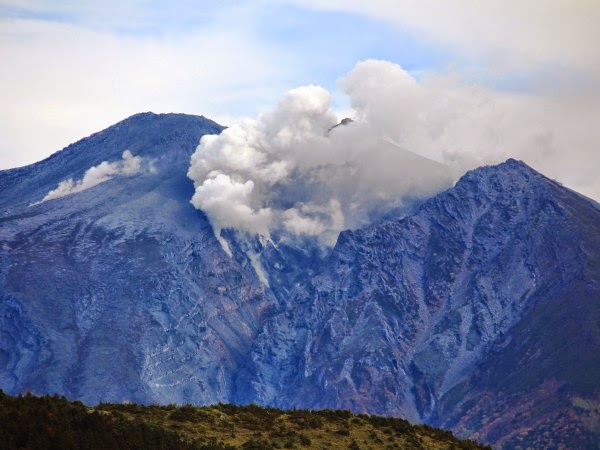
Can volcanic eruptions be predicted?
The question has been very much in the news in Japan since the 27 September eruption of Mount Ontake. Despite 24/7 monitoring of the mountain for telltale warning signs, the Japan Meteorological Agency (JMA) failed to predict the eruption. It surprised several hundred hikers enjoying a glorious autumn day on the 3067-meter mountain, leaving 56 confirmed dead and seven still missing—the country’s deadliest eruption in nearly 90 years.
On Monday, a popular TV show asked whether the country could do better. Each week, Beat Takeshi’s TV Tackle features a group of celebrities quizzing experts on topics in the news. The most recent program brought together a panel of earth scientists and others concerned about volcanoes (on YouTube in Japanese here). “There is no way to precisely predict eruptions,” said Robert Geller, a geophysicist at the University of Tokyo famous for his criticism of Japan’s earthquake prediction efforts. He added that prediction efforts might succeed once in a thousand tries. “If society recognizes that, then warnings are surely possible,” he added. Hideki Shimamura, a geophysicist at Musashino Gakuin University in Sayama, agreed. “I’m rather critical about the idea of eruption prediction,” he said.
Today at a briefing for journalists, Toshitsugu Fujii, who chairs the JMA Coordinating Committee for Prediction of Volcanic Eruptions, got a chance for rebuttal. Fujii, a volcanologist and professor emeritus of the University of Tokyo, pointed to nine successful predictions since the program started in 1974. The most impressive example may be the case of Mount Unzen near Nagasaki. In late May 1991, after noting small eruptions and the formation of a lava dome, JMA convinced local authorities to evacuate 12,000 nearby residents. The mountain erupted on 3 June, sending a pyroclastic flow 4.5 kilometers from the crater. It killed 43 journalists and volcanologists who had entered the no-go zone to take pictures and gather data. “But not a single resident of the area died,” Fujii says.
Still, he agrees that eruption prediction “is not very reliable yet.”
It is not for lack of trying. Japan has 110 active volcanoes, including those on remote islands and beneath the ocean. JMA monitors 47 of those around the clock for seismic activity and ground deformation, and for some mountains it also watches gas and smoke emissions. At one time, human observers were stationed on certain mountains. Now, all the data are relayed to four observation centers.
Those centers, however, are largely staffed by civil servants and not trained scientists, Fujii explained. And because volcanic activity in Japan has been rather quiet in recent decades, they’ve had little on-the-job training.
Another weakness of Japan’s eruption prediction efforts is the split of responsibilities. JMA does not directly carry out volcanic research, which is left to universities and certain national institutes. In contrast, the U.S. Geological Survey has more than 100 volcanologists involved in a comprehensive research effort. The coordinating committee he chairs has “no legal authority, power, or budget,” Fujii explains.
Communications is also a weak link. Even among the nine cases where JMA recognized a coming eruption, warnings reached local authorities in time for action in only three cases. A new committee charged with investigating how to speed up the flow of information will hold its first meeting this month. A separate committee will examine the specifics of the Mount Ontake eruption to see if warning signs were missed.
After the TV program, Geller wrote to ScienceInsider that he is not saying eruption prediction shouldn’t be tried. But he objects to JMA’s five volcanic alert levels, which range from normal (Level 1) to stay off the mountain (Level 3) to evacuating nearby residents (Level 5). He thinks this implies a degree of precision beyond the current state of the art. The five-level system “is misleading the public to overestimate the accuracy and reliability of what’s now possible,” he wrote.
Note : The above story is based on materials provided by Dennis Normile ” American Association for the Advancement of Science. All Rights Reserved.”









